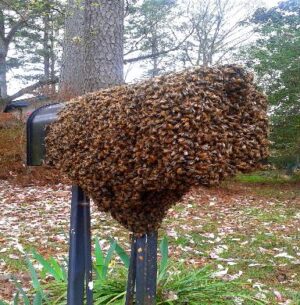Bees are amazing animals that are essential to our ecology. These charming insects that adorn our gardens are vital pollinators that facilitate the growth of several plants, including those that provide food for humans. Regrettably, they also worry those who are allergic to bee stings, and the hazards associated with their infestation often result in destructive eradication techniques. In this article, we’ll examine some of the most effective methods for humanely eliminating bees and promoting peaceful cohabitation with them.
Knowing Bee Nests and Their Behavior
Bees come in a wide variety of varieties, and they all have unique nesting habits and preferences. The most prevalent species, honeybees, are gregarious insects that form intricate combs in hollow structures, often found in abandoned buildings and trees. In contrast, stingless bees, who are renowned for their kindness, build nests out of resin and fasten them to trees, while bumblebees prefer to nest underground or in holes.
Differentiating between wasp and bee nests is essential in order to choose the appropriate elimination technique. Because of the honeycomb, bee nests usually have a fuzzy appearance, whereas wasp nests are smoother and more akin to paper. Additionally, wasps are more common around dawn and twilight while bees are more busy throughout the day.
Avoidative Steps to Reduce Bee Infestation
To greatly lower the likelihood of a bee infestation, there are a few easy and uncomplicated steps you may take. Since bees are drawn to sugary and sweet materials, you should take care while storing food. Additionally, you should seal any openings around doors and windows or other possible entrance sites.
Planting blooming plants that draw in native pollinators is another smart move. This will promote a thriving ecology and lessen the need for drastic insect control methods.
Techniques for Humanely Eliminating Bees
- Mustard
Probably the most often used method of keeping bees away is vinegar. Unlike artificial substitutes, vinegar doesn’t hurt plants and doesn’t contain any unpleasant elements. To create a deterrent that works:
-In a spray bottle, combine equal parts water and vinegar.
-Spray it in areas where bees seem to commonly gather.
Make careful you do this at night.
- Plants to Keep Bees Away
Because they contain components that repel bees, plants like eucalyptus, mint, and citronella are excellent natural remedies. Citronella candles are an equally good option if you don’t want to add additional plants to your garden.
- Moving the Hive
There will be no shortage of beekeepers eager to move the hive. If you are working with honeybees, most people even do it for free.
- Services for Pest Control
To remove larger nests or infestations in difficult-to-reach areas, it is best to engage bee removal experts. Expert bee removers have the knowledge and equipment required to remove and transfer bees securely and without causing damage to them.
To guarantee you won’t have to struggle with an infestation again, our staff uses thorough pest control techniques. Please get in touch with us; we tackle bee issues using modern, compassionate treatment techniques.
